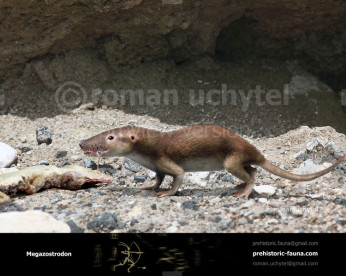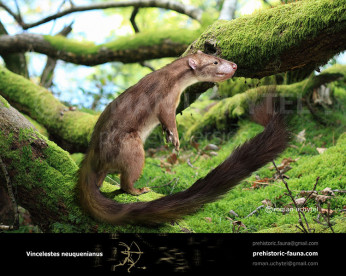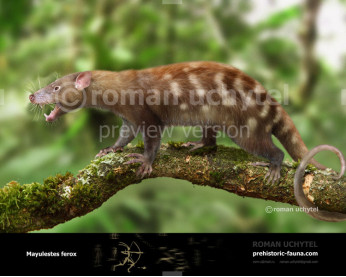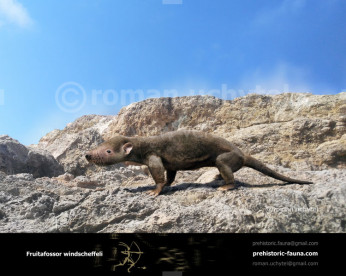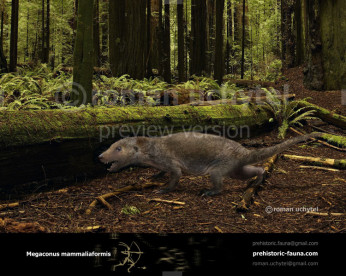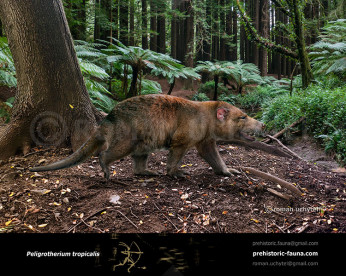Taeniolabis
28652865Taeniolabis (†Taeniolabis (Cope, 1882))
Class: Mammalia
Order: †Multituberculata
Family: †Taeniolabididae
Temporal range: Paleocene of North America (65–64 Ma)
Dimensions: length - 1,8 m, weight - 100 kg
Taeniolabis from the Paleocene of North America is the largest known member of the extinct order Multituberculata, as well as the largest non-therian mammal: T. taoensis, a species known from Danian deposits in the Denver Formation of Colorado, possibly exceeds 100 kg.
Multituberculata is an extinct order of rodent-like mammals with a fossil record spanning over 130 million years. They first appeared in the Middle Jurassic, and reached a peak diversity during the Late Cretaceous and Paleocene. They eventually declined from the mid Paleocene onwards, disappearing from the known fossil record in the late Eocene. They are the most diverse order of Mesozoic mammals with more than 200 species known, ranging from mouse-sized to capybara-sized. These species occupied a diversity of ecological niches, ranging from burrow-dwelling to squirrel-like arborealism to jerboa-like hoppers. Multituberculates are usually placed as crown mammals outside either of the two main groups of living mammals—Theria, including placentals and marsupials, and Monotremata —but usually as closer to Theria than to monotremes. They are considered to be closely related to Euharamiyida and Gondwanatheria as part of Allotheria.
Оплата
У Вас є кілька зручних способів купівлі зображення: кредитна чи дебетова картка Visa, Mastercard, Maestro; PayPal або банківський переказ
Taeniolabis (†Taeniolabis (Cope, 1882))
Class: Mammalia
Order: †Multituberculata
Family: †Taeniolabididae
Temporal range: Paleocene of North America (65–64 Ma)
Dimensions: length - 1,8 m, weight - 100 kg
Taeniolabis from the Paleocene of North America is the largest known member of the extinct order Multituberculata, as well as the largest non-therian mammal: T. taoensis, a species known from Danian deposits in the Denver Formation of Colorado, possibly exceeds 100 kg.
Multituberculata is an extinct order of rodent-like mammals with a fossil record spanning over 130 million years. They first appeared in the Middle Jurassic, and reached a peak diversity during the Late Cretaceous and Paleocene. They eventually declined from the mid Paleocene onwards, disappearing from the known fossil record in the late Eocene. They are the most diverse order of Mesozoic mammals with more than 200 species known, ranging from mouse-sized to capybara-sized. These species occupied a diversity of ecological niches, ranging from burrow-dwelling to squirrel-like arborealism to jerboa-like hoppers. Multituberculates are usually placed as crown mammals outside either of the two main groups of living mammals—Theria, including placentals and marsupials, and Monotremata —but usually as closer to Theria than to monotremes. They are considered to be closely related to Euharamiyida and Gondwanatheria as part of Allotheria.

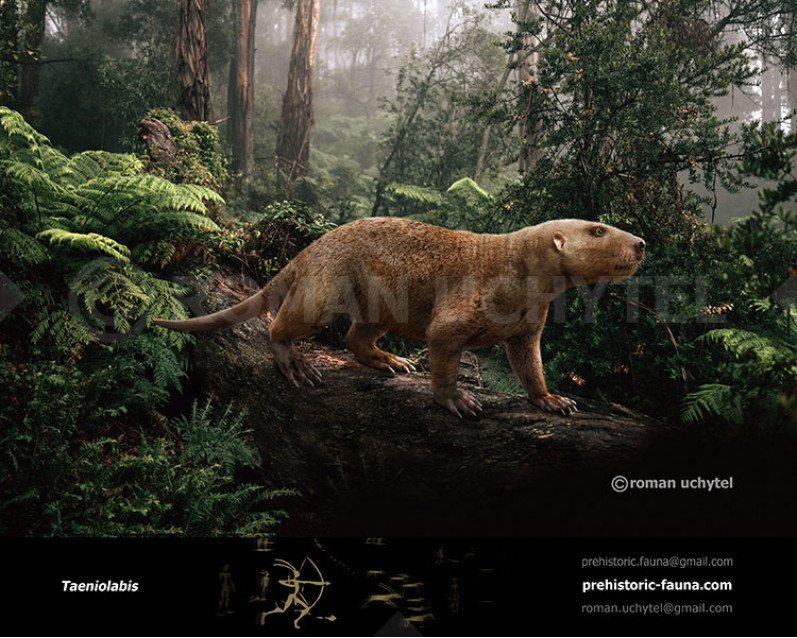
-797x638.jpg)

-70x56.jpg)
-346x277.jpg)
